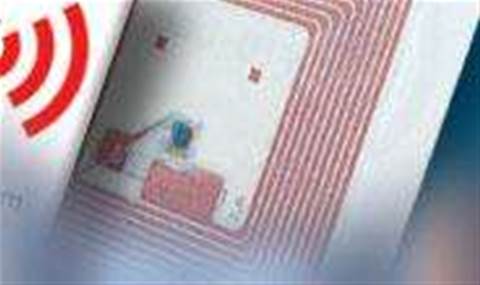In a world-first for Microsoft, all delegates will carry a passive RFID tag behind their conference lanyard.
It is expected that up to 5,500 tags will be in use across the four days of the event.
The tags will be scanned as people enter or leave one of 34 doorways in the Sydney Convention and Exhibition Centre.
A person’s entry will trigger an animated avatar on the big in-room screen using cutting-edge motion detection developed with Expression Blend, Silverlight 2 and the Windows Presentation Foundation (WPF).
No personally identifiable information, such as names, will be displayed alongside the avatar, according to Breeze Training collaboration and integration specialist, and network co-creator, Mick Badran.
Delegates will also be educated on how to opt-out or remove the RFID tag, but Microsoft is hoping most will choose to participate.
The network is intended to help delegates see when rooms are filling up, identify personal networking opportunities, and showcase what can be achieved with RFID using an out-of-the-box Microsoft application stack.
“I really want this to be about making the delegate experience better,” Badran told iTNews.
“It’s new technology so people are always going to be wary to some extent, but the fact is we can’t track [delegates] from satellites – we can’t even track them more than six metres from an antenna.”
Badran continued, “We’re also limited by the laws of physics. People moving through a conference are vastly different from boxes moving along a production line where you can control speed, spacing and direction.
“These are some of the fun and games [scenarios] we’ve been playing around with,” he said.
Breeze attended two user groups to test the dynamics of people moving past antennas and mobile readers. This enabled the consultancy to answer questions on where to place and what direction to face antennas, and how much power was needed for the system.
The resulting system is able to handle as many as 250 people moving simultaneously through a doorway at a span of up to 10.5 metres.
The network includes 118 antennas, 56 fixed readers, 20 Kenetics Windows mobile-based readers and multiple screens to display Silverlight visualisations and BI data on attendees.
With the assistance of Kenetics, Badran coded the RFID component for the mobile readers in two weeks, using BizTalk RFID Mobile 1.1 beta.
“We’ve now got an application that we can plug any hardware RFID device into,” said Badran.
“In fact, the fixed and mobile readers all interface into the same system technology and code base. This means that if I’m from an RFID world, I can build out a mobile RFID component without too much upskill or needing to reprogram in a separate language.”
Information collected by antennas is initially collected on a lightweight RFID server running Windows XP that is located near each door.
The information is displayed on the screen in each room.
The delegate’s tag must be within the antenna’s field of view to be read correctly. The readers are programmed to scan the doorways every quarter of a second.
The collected information is then routed to the central ‘Breeze RFID boiler room’, where it is combined into a data cube for analysis. The room will be open for tours during Tech Ed.
“Each door is manned by its own local system which can be run in isolation. These also drive the displays in each room,” Badran said.
“We did our initial processing with a centralised model, but our concern was if the network went down, we still wanted to be able to read people going in or out of the doors, so we [settled on] 34 localised RFID server systems.”
Presenters will have the ability to ‘slice-and-dice’ the information live in their sessions to tailor content to suit the audience’s interests.
Delegates will also benefit from being able to identify sessions that are most popular for their particular job titles, to help them more effectively apportion their time at the event.
“We want to dispel some of the myths about RFID,” said Marcella Larsen, senior product manager at Microsoft Australia.
“We want to inspire people to get to rooms quickly and get seats when they see them filling up [in real time].
“We also want to really inspire them to see what can be done with our application stack out-of-the-box, and get them thinking about RFID beyond traditional supply chain [applications],” Larsen added.
Microsoft Tech Ed is on from September 3-5.
Microsoft tracks people with RFID tags
By
Ry Crozier
on Aug 20, 2008 9:37AM

Got a news tip for our journalists? Share it with us anonymously here.
Partner Content

Shure Microsoft Certified Audio for Teams Rooms

Promoted Content
From Insight to Opportunity: How SMB Service Demand is Shaping the Next Growth Wave for Partners
_(11).jpg&h=142&w=230&c=1&s=1)
The Compliance Dilemma for Technology Partners: Risk, Revenue, and Reputation

Channel faces AI-fuelled risk as partners lag on data resilience, Dicker Data summit told

Tech Data: Driving partner success in a digital-first economy






.jpg&w=100&c=1&s=0)
_(8).jpg&w=100&c=1&s=0)









